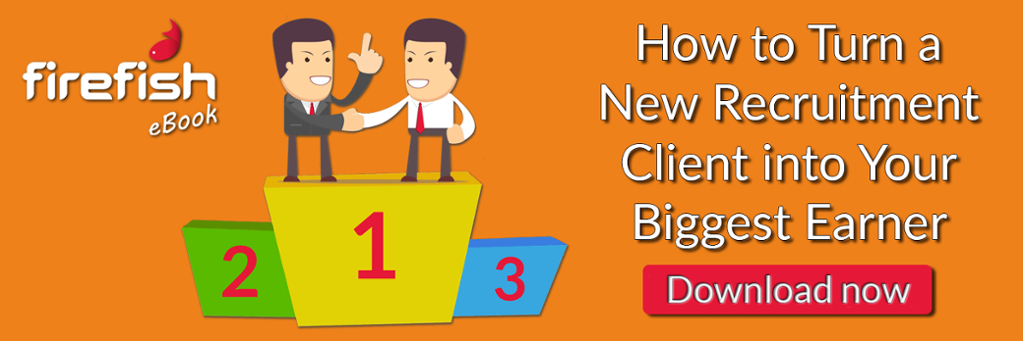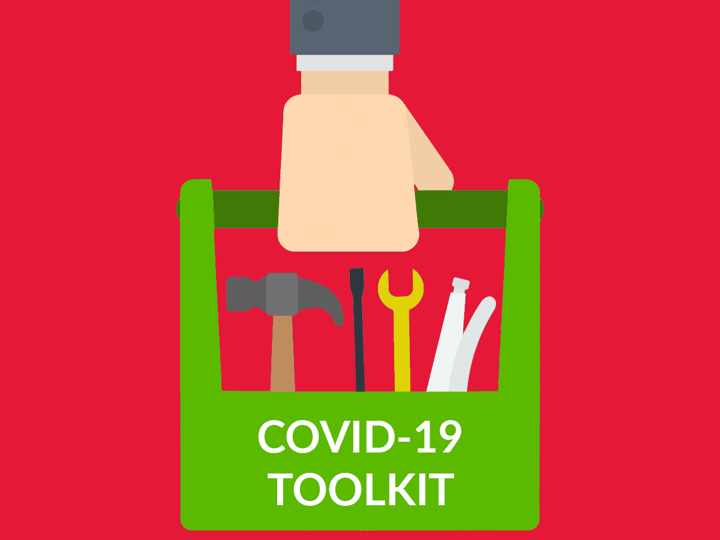We’ve all had to deal with our fair share of clients that move at a snail's pace. But in today’s market, a slow recruitment process can cost you your candidate (and your fee!).
To avoid losing top-talent to a competitor, you need to create a sense of urgency that motivates your client to make decisions…fast!
Here are five ways to create a sense of urgency with your recruitment client…
1. Educate them on the need for speed
 As a market expert, you know the cost of moving too slow – it can make candidates impatient and more likely to ghost! But when it comes to hiring a new start, a quick time-to-hire isn’t something your clients necessarily think about. So if you want them to act quickly, you need to educate them on why it’s crucial to move fast in today’s market.
As a market expert, you know the cost of moving too slow – it can make candidates impatient and more likely to ghost! But when it comes to hiring a new start, a quick time-to-hire isn’t something your clients necessarily think about. So if you want them to act quickly, you need to educate them on why it’s crucial to move fast in today’s market.
Use evidence such as relevant data from your CRM or real-time recruitment statistics that clearly demonstrate the challenges a long time-to-hire will have on their recruitment process.
For example, right now in-demand candidates are on the market for an average of only 10 days. Presenting your client with data like this is evidence that they can’t ignore! With only 10 days to see a candidate through to job offer stage, it’s clear to see why holding up the recruitment hiring process, even by a day, will lose them top talent.
2. Lay out the whole process for them
In an ideal situation, your client would be working to your timescale and responding as quickly as possible. But if you've never communicated exactly what needs to happen and when, how can you expect them to deliver on time?
Putting a time-specific plan of action in place is a great way to create a sense of urgency with your client. You can do this with something as simple as a shared document that lays out the whole recruitment process week by week. Once you’ve established the new hire's start date, work your way through each step and assign specific deadlines for you and your client.
Creating a timeline like this gives them full transparency of exactly what the recruitment process is, what’s expected of them and precisely when it’s needed by.
It's also a great way to emphasise to your client how a single slow move will have a negative impact on the entire recruitment process. Knowing what deadlines they need to hit, and what will happen if they don’t, your client will feel that bubbling sense of urgency and be keen to keep the process on track.
3. Keep your client accountable
 The first two steps should be enough to get your client working at your pace but no matter what you do, business priorities can get in the way. To stop them from falling completely off the radar, you need to keep them accountable throughout the entire recruitment process.
The first two steps should be enough to get your client working at your pace but no matter what you do, business priorities can get in the way. To stop them from falling completely off the radar, you need to keep them accountable throughout the entire recruitment process.
There are a few ways to do this: Setting up diary reminders for every deadline acts as a visual reminder that keeps them accountable, even when you’re not in touch. Another way is by writing your agreed milestones into your terms of business or contract. That way, your client will need to sign off on their deadlines before you start the process. Do this and they'll be obligated to stick to the timeline. And if any serious delays happen, you’ll have something to refer back to.
In this candidate-short market, recruiters lose candidates to competitors every day. So if your client continues dragging their heels, you need to revisit the conversations you had about poor recruitment practices and exactly how costly a long recruitment process can be. Keep them accountable and they’ll soon get the message. If they don't, the relationship will continue to be counter-productive, so it's worth finding a more valuable client.
Download: Client Value Chart: How to Stop Wasting Time on the Wrong Clients
4. Use FOMO to your advantage
Whether it's marketers sending out emails that count down to the end of a sale, or a hotel website telling you there’s only one room left – FOMO (the fear of missing out) is an effective psychological technique that drives people to take action.
But any hiring manager with more than a few years' experience will see this trick coming from a mile away. They’ve heard “the candidate is about to get an offer from your biggest competitor” many times before. So my advice is if you’re going to use FOMO to create a sense of urgency, be honest and be specific.
Resend the candidate’s CV to the client and tell them exactly who is trying to poach them, or how quickly they were snapped up. The fear of losing to the competition should kick them into action. But if the candidate doesn’t have other offers coming their way, it’s best to skip this step altogether. Get caught exaggerating once, and you risk losing the trust you’ve built. This is enough to tarnish your reputation and lose the client.
5. Create a frictionless process
I’ve talked a lot about sluggish clients, but it’s worth remembering we’re sometimes the reason a client is reluctant to get back to us. In my opinion, if you’re even a little bit disorganised or difficult to work with, motivation will dip and your client will go cold - even if you’ve got top candidates.
The key to building up momentum and keeping the recruitment process flowing is being an all-around A+ recruiter that a client enjoys working with. Small touches like getting back to them as soon as possible will prove your value and create a frictionless process. Master this, and not only will your client get back to you swiftly, but they soon see you as the A+ recruiter that always has their hiring needs in mind.
Download the eBook below for tips on how to turn your new recruitment client into your biggest earner. 
David Connolly
David is a Senior Growth Outreach Specialist at Firefish. After working as a 360 recruiter, he loves innovating recruitment with Firefish Software.



